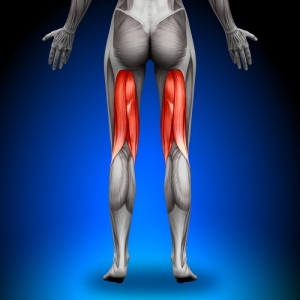 On Saturday I was coaching a running group and after their long, slow-duration run one of the participants asked me about stretching afterwards. I realised later that even though his was a simple question, he had struck me a bit dumb and I wasn’t really able to give him the answer he was looking for.
On Saturday I was coaching a running group and after their long, slow-duration run one of the participants asked me about stretching afterwards. I realised later that even though his was a simple question, he had struck me a bit dumb and I wasn’t really able to give him the answer he was looking for.
The reason for this is that I hadn’t screened him. I didn’t know what was going on in his body, which means I didn’t know whether he might have issues if he went ahead and stretched. Lets look at an example.
Do you have tight hamstrings? Do you repeatedly stretch but find you still have tight hamstrings? Have you considered that it might be something else? (Your hamstrings is the collection of muscles at the back of your thigh).
Lets look at a potential cause. Our modern lifestyle has us moving in ways that we are not designed for. Sitting for long hours in front of computers puts a lot of stress on our bodies. Sitting on a chair isn’t what our bodies are used to so the body needs to make lots of compensatory movements to allow us to stay in this position.
 One specific problem that is often associated with tight hamstrings is that the sciatic nerve becomes tethered. The sciatic nerve runs down the back of the leg. The hamstring also runs down the back of the leg, see where I am going? When the nerve gets tethered, the body tries to protect it. After all, our nerves are pretty important, huh? Symptoms may take a long or short time to develop and not everyone will develop a symptom. One sign of a tethered sciatic nerve is the feeling of tight hamstrings. As our nerves are so important, the muscle takes the strain for them, contracting, which then gives that tight hamstring feeling. The muscle is actually contracting in order to stop you moving further, to help protect the nerve. Our bodies are so clever. But if you keep stretching and you have a tethered nerve, you can do your body more damage.
One specific problem that is often associated with tight hamstrings is that the sciatic nerve becomes tethered. The sciatic nerve runs down the back of the leg. The hamstring also runs down the back of the leg, see where I am going? When the nerve gets tethered, the body tries to protect it. After all, our nerves are pretty important, huh? Symptoms may take a long or short time to develop and not everyone will develop a symptom. One sign of a tethered sciatic nerve is the feeling of tight hamstrings. As our nerves are so important, the muscle takes the strain for them, contracting, which then gives that tight hamstring feeling. The muscle is actually contracting in order to stop you moving further, to help protect the nerve. Our bodies are so clever. But if you keep stretching and you have a tethered nerve, you can do your body more damage.
So the next time you stretch your hamstrings, have a think about whether you are actually putting tension on your poor sciatic nerve.
If you want to find out if this is something you suffer from and how to allow your hamstrings to start moving as they should be, get in touch for a screening. And get off your seat as much as possible and move around.
Author: Lorna Wilson
Like what you see? Then send me a message or e-mail. We can meet up for a chat and find out how I can help you improve your training and help reduce injury risk.
06 460 377 74 / lorna@wilsonsworkouts.nl




